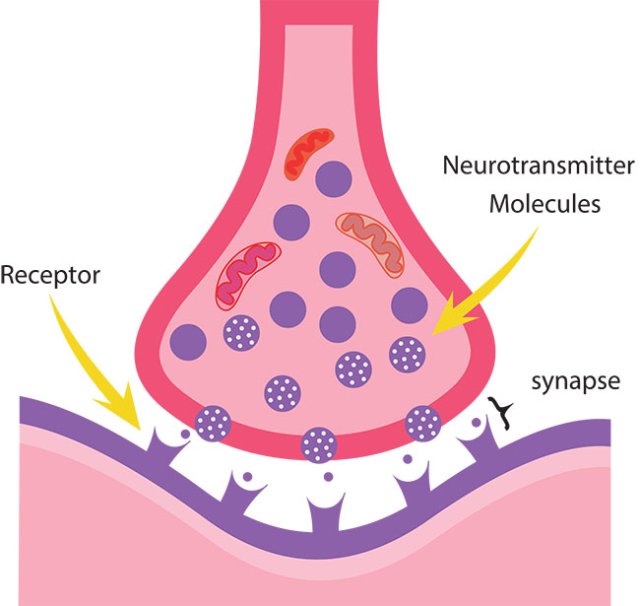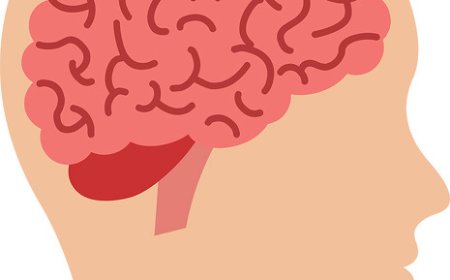Motor Nerves: How the Brain Controls Movement
Learn about motor nerves for kids. Discover how your brain sends messages through nerves to control muscles and help you move, jump, and play.

🧠 Introduction: Movement Starts with a Message
Every time you jump, write, wave, or blink, your body is responding to a command from your brain. But how do these messages actually reach your muscles? That job belongs to the motor nerves. These nerves are part of the nervous system, and their job is to carry movement instructions from the brain and spinal cord to your muscles.
Without motor nerves, your brain would have no way to control your body’s movement. You wouldn’t be able to smile, pick up a pencil, or take a single step. These nerves allow you to move your body, speak, and interact with the world—all at amazing speed.
🧬 What Are Motor Nerves?
Motor nerves, also called efferent nerves, are a special type of nerve that sends messages from the central nervous system (CNS)—which includes your brain and spinal cord—out to your muscles and glands. These messages come in the form of electrical signals called nerve impulses.
When your brain decides to move a part of your body, it sends a signal down your spinal cord and through a motor nerve to a muscle. The muscle receives the message and contracts (tightens), which causes movement.
Every single movement you make—whether it's standing up straight or scratching your nose—begins with a motor nerve signal.
⚙️ Types of Motor Nerves
Motor nerves can be grouped based on the types of muscles they control:
1. Somatic Motor Nerves – Control Voluntary Movement
These nerves control skeletal muscles, the muscles you move on purpose. These nerves help you:
- Walk, run, and jump
- Move your fingers to type or draw
- Smile, talk, or chew
- Turn your head, bend your arms, and wave
These are voluntary actions, which means you choose to do them.
2. Autonomic Motor Nerves – Control Involuntary Muscle Movement
These nerves control smooth muscle and cardiac muscle, such as:
- The muscles in your heart (heartbeat)
- The muscles in your stomach and intestines (digestion)
- The muscles in your lungs and blood vessels
These are involuntary actions, which happen automatically without you thinking.
🧠 How Motor Nerves Work
Motor nerves work closely with motor neurons—special nerve cells that start in the brain or spinal cord and end in a muscle. The process of making a movement goes like this:
You decide to move (for example, wave hello).
Your brain sends an electrical signal to the spinal cord.
A motor nerve carries the signal from the spinal cord to the muscles in your hand.
The muscles contract and move, allowing you to wave.
Once the message is complete, the muscles relax again.
This process happens in a split second—so quickly that you don’t even notice it!
💡 Why Motor Nerves Matter
Motor nerves are essential for:
- Movement and coordination
- Talking and eating
- Posture and balance
- Reflexes (like quickly pulling your hand away from something sharp)
If motor nerves are damaged, the brain can’t properly control the muscles. This can lead to problems like muscle weakness, twitching, or even paralysis. Conditions such as ALS (Amyotrophic Lateral Sclerosis) or spinal cord injuries affect motor nerves and make movement difficult or impossible.
🧠 Vocabulary List
Motor nerve A nerve that carries movement signals from the brain to the muscles
Motor neuron A nerve cell that sends messages to a muscle to make it move
Spinal cord A bundle of nerves that connects the brain to the body
Voluntary movement A movement you choose to make, like walking or waving
Involuntary movement A movement your body does on its own, like your heartbeat
Skeletal muscle Muscles attached to bones that help you move
Smooth muscle Muscles in organs like your stomach and blood vessels
Cardiac muscle Muscle tissue found only in the heart
Contraction When a muscle tightens or shortens to cause movement
Reflex A quick, automatic response to a stimulus
⭐ Kid-Friendly Summary
Motor nerves are the wires that help your brain tell your muscles what to do. When you want to move, your brain sends a signal through your spinal cord and down a motor nerve to your muscles. They tighten and move your body. Some motor nerves help you do things on purpose, like running or smiling, while others work automatically, like making your heart beat or your stomach digest. Without motor nerves, you couldn’t move at all!
🤯 Fun and Interesting Facts
Motor nerve signals can travel at speeds up to 200 miles per hour!
Babies’ motor nerves aren’t fully developed at birth—that’s why they have jerky movements.
You have about 600 muscles in your body, and all of them rely on motor nerves to move.
Some animals, like starfish, move without a brain, but they still have motor nerves.
The largest nerve in the human body, the sciatic nerve, is a motor nerve that runs from your lower back to your foot.
❓ Interactive Quiz: Motor Nerve Challenge
1. What is the main job of motor nerves?
A. Make you feel hot or cold
B. Send messages to your muscles
C. Help you see and hear
D. Digest your food
2. What kind of muscle do motor nerves control voluntarily?
A. Cardiac muscle
B. Smooth muscle
C. Skeletal muscle
D. Reflex muscles
3. What happens when a motor nerve sends a message to a muscle?
A. The muscle grows
B. The muscle rests
C. The muscle contracts
D. The muscle disappears
4. Which part of your nervous system sends signals to motor nerves?
A. Lungs
B. Brain and spinal cord
C. Bones
D. Ears
5. What is a reflex?
A. A thought you forget
B. A movement that happens without thinking
C. A slow reaction to pain
D. A muscle that never moves




















































